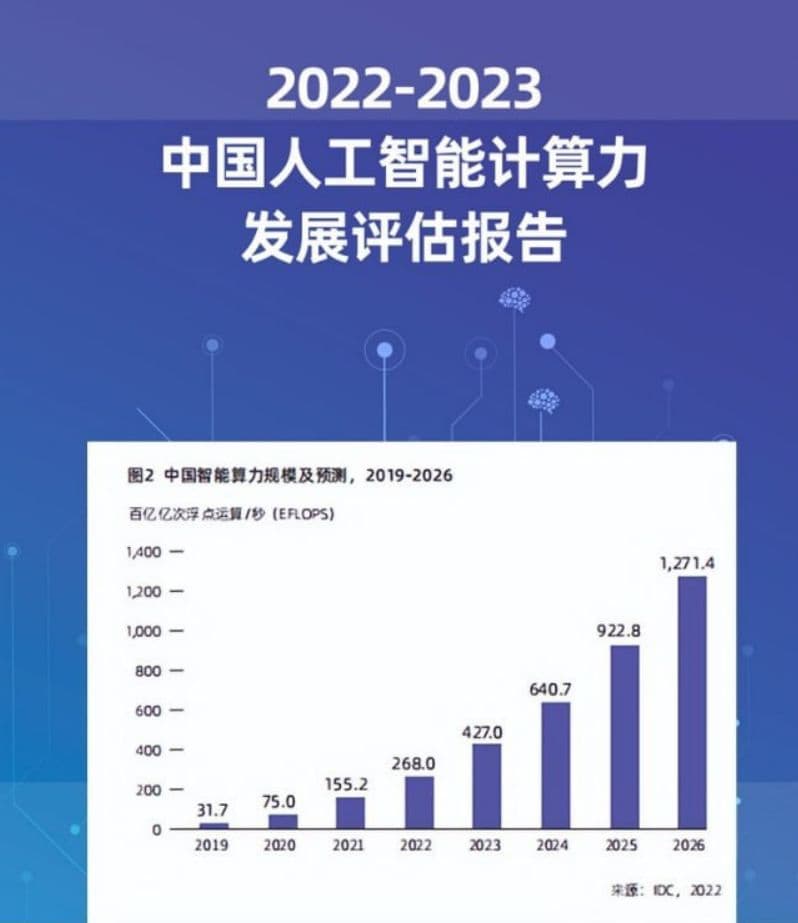US Leads with 2x More AI Computing Power Than China and 4000x More Than Russia



The intellectual computing power of China is 4 thousand times greater than Russia. By 2030, Russia’s backlog could be reduced… up to 3.5 thousand times. These seemingly crazy figures follow from a comparison of two authoritative sources.
- Documents from the strategic meeting on “Development of artificial intelligence” that the Russian government held on September 26, 2023.
- “2022-2023 Assessing the Development of Artificial Intelligence Computing Power in China” joint report by International Data Corporation (IDC), Chinese server manufacturer Inspur, and the Institute of Global Industry of Tsinghua University.
The initial document suggests the following. By 2027, the computing power of Russia’s AI research, development, and application infrastructure is projected to increase from approximately 0.1 exaflops to 1 exaflops. Although the materials do not specify the nature or source of the progress, the only theoretical possibility for further growth in this indicator by 2030 is attributed to advancements in GPU technology. In practical terms, it is anticipated that 1 exaflops will remain the highest computing power achieved by the Russian AI infrastructure until 2030, despite the projected computing power requirements of 6.2 exaflops for the AI infrastructure by that time.
The second document presents and proposes figures that are of an immensely different magnitude. As of 2023, the computing power of China’s AI research, development, and application infrastructure is estimated to be around 427 exaflops. There are plans to increase this value to 1271 exaflops by 2026. Based on the data provided in the report, it can be deduced that by 2030, the computing power of China’s AI research, development, and application infrastructure could reach approximately 3,550 exaflops (equivalent to 3.55 zettaflops).

Also remind you that in the United States, the computing power of the infrastructure for research, development and application of AI is now about 40-50% greater than that of China and by 2030 the United States plans to break away by about 2 times due to export restrictions on microelectronics.
German Gref, the head of Russia’s largest bank, Sberbank, did not begin his first report at the strategic session with the previously quoted shell anecdote: “It’s like that joke: can you think of three reasons why you should retreat?” The first reason is that we don’t have shells. We don’t have that many shells here, either.”
After all, it’s the same with the development of AI: if there is no and is not planned in Russia to acquire an AI infrastructure with at least somewhat comparable computing power, there is no point in discussing ways to overcome the other six challenges.
- The 2022-2023 Global Computing Index report by IDC, IEIT Systems, and the Tsinghua Institute for Global Industry shows China’s data center infrastructure expanded by 29%, enhancing its computing power by 31%, and intensifying its commitment to AI development. The country’s storage capacity also increased by 23%, from 878 Exabytes to 1080 Exabytes. These growth rates have pushed China to match the US’s scientific and technological prowess. In 2022, China’s computing industry surpassed ¥1.8 trillion, equivalent to $247 billion USD. Plans for 2025 project ¥4.4 trillion, or $613 billion USD. The scale of computing resources across all sectors reached ¥9.8 trillion, equivalent to $1.4 trillion USD. An impressive 41% of China’s economic output now derives from the digital economy.
Disclaimer
In line with the Trust Project guidelines, please note that the information provided on this page is not intended to be and should not be interpreted as legal, tax, investment, financial, or any other form of advice. It is important to only invest what you can afford to lose and to seek independent financial advice if you have any doubts. For further information, we suggest referring to the terms and conditions as well as the help and support pages provided by the issuer or advertiser. MetaversePost is committed to accurate, unbiased reporting, but market conditions are subject to change without notice.
About The Author
Damir is the team leader, product manager, and editor at Metaverse Post, covering topics such as AI/ML, AGI, LLMs, Metaverse, and Web3-related fields. His articles attract a massive audience of over a million users every month. He appears to be an expert with 10 years of experience in SEO and digital marketing. Damir has been mentioned in Mashable, Wired, Cointelegraph, The New Yorker, Inside.com, Entrepreneur, BeInCrypto, and other publications. He travels between the UAE, Turkey, Russia, and the CIS as a digital nomad. Damir earned a bachelor's degree in physics, which he believes has given him the critical thinking skills needed to be successful in the ever-changing landscape of the internet.
More articles

Damir is the team leader, product manager, and editor at Metaverse Post, covering topics such as AI/ML, AGI, LLMs, Metaverse, and Web3-related fields. His articles attract a massive audience of over a million users every month. He appears to be an expert with 10 years of experience in SEO and digital marketing. Damir has been mentioned in Mashable, Wired, Cointelegraph, The New Yorker, Inside.com, Entrepreneur, BeInCrypto, and other publications. He travels between the UAE, Turkey, Russia, and the CIS as a digital nomad. Damir earned a bachelor's degree in physics, which he believes has given him the critical thinking skills needed to be successful in the ever-changing landscape of the internet.






















































